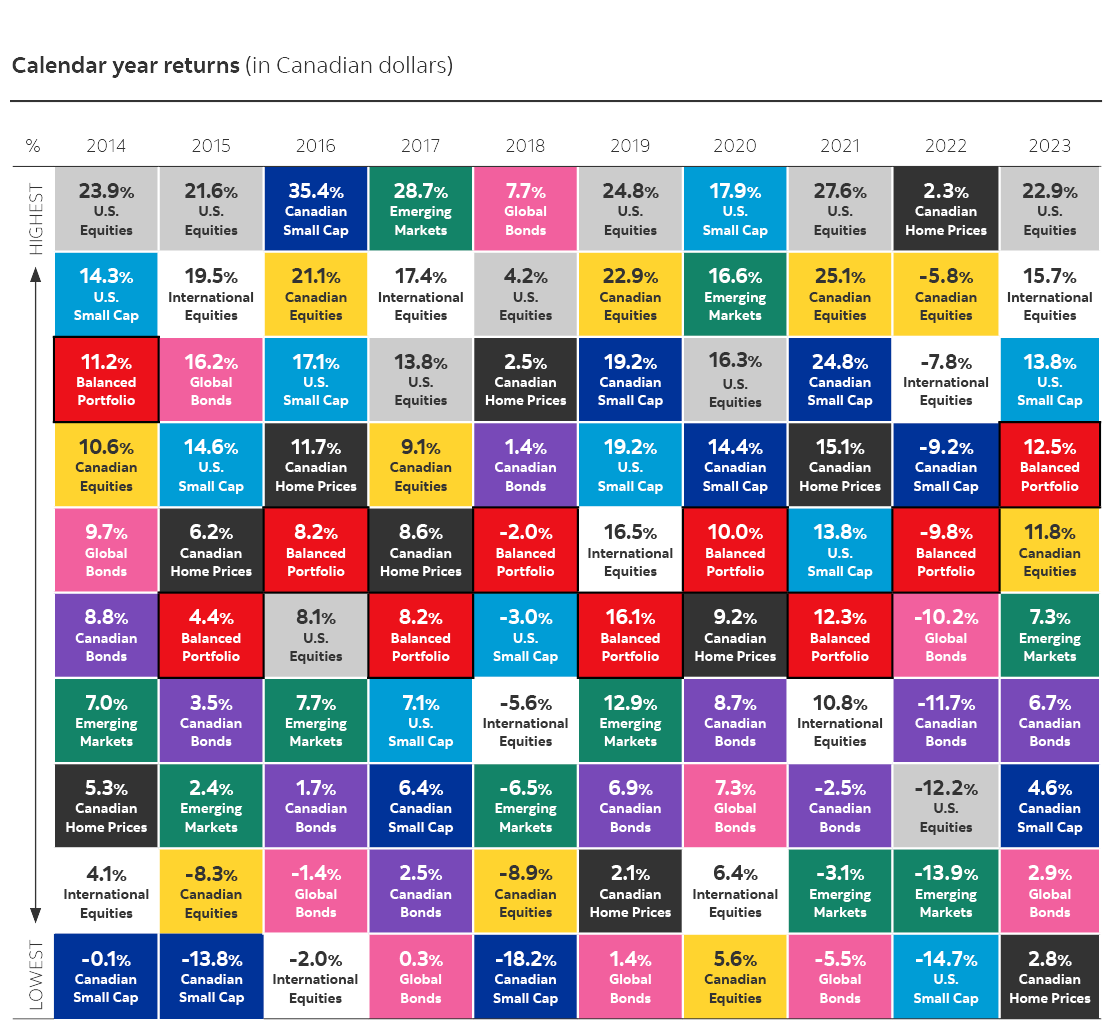Investing in a stock market without volatility is as illusory as driving a car without an engine. The two concepts invariably go hand in hand. But does that mean you should avoid volatility and investing altogether?
The short answer is no. Market uncertainty can naturally cause panic and lead to poor investment decisions, at times, even for the most seasoned investors. Yet, by recognizing that market fluctuations always have been and always will be inevitable can help ensure that it doesn’t derail your long-term investment goals.
Here are five tested principles that can help you gain needed perspective.
Investors generally feel a financial loss about two and a half times more than a gain of the same magnitude.1 Understandably, many of us experience a roller coaster of emotions when investing (see Figure 1), which can translate into impulsive buy and sell decisions.
History shows us that downturns are a part of the market cycle. And so, to achieve your financial goals, rather than being swayed by emotions, do your best to stay calm, even when markets get bumpy.
Figure 1: Cycle of market emotions

Market fluctuations can often tempt investors to delay investing or move their investments to cash, waiting for “better” conditions to prevail. However, timing the market is nearly impossible to do consistently and frequently results in missed opportunities, as it requires you to make two correct decisions: when to sell and when to reinvest.
So, trying to time market ups and downs is a bit like rolling the dice, and risks missing out on the best days of market performance, which can significantly impact your long-term investment results. Staying invested, while not always easy, can potentially translate into a better outcome.
Figure 2: The value of staying invested
$10,000 invested in Canadian stocks over the past 10 years

While volatility is an unavoidable part of investing in financial markets, it can certainly be managed. Selecting an appropriate asset allocation aligned with your goals and risk tolerance is one of the most important and impactful investment decisions you can make when investing.
Taking on investment risk doesn't need to be an all or nothing approach. Consider finding a “happy medium” with an investment solution that offers a balanced approach to risk and return. Doing so can help you stay the course through market ups and downs, ultimately increasing your chances of achieving your long-term financial goals.
Scotia Portfolio Solutions leverage the experience of Scotia Global Asset Management’s Multi-Asset Management Team, known for successfully navigating market volatility and seizing investment opportunities regardless of market conditions.
Like the familiar adage, “Don’t put all your eggs in one basket,” diversification is a tried-and-tested technique that mixes different types of investments in a portfolio to lower overall risk. No single asset class is consistently among the top performers, and the best and worst performers can change from one year to the next.
By including investments that are less correlated to one another – or react differently to economic and market events – gains in some can help offset losses in others. As Figure 3 illustrates, a diversified portfolio with different asset classes provides the opportunity to participate in the potential gains of each year’s top winners while aiming to lessen the negative impact of those at the bottom.
Figure 3: Calendar year returns (in Canadian dollars)


The asset classes are represented by their indicated indices, and the balanced portfolio is illustrative in nature and was rebalanced monthly. This information is for illustrative purposes only. It is not possible to invest directly in an index. Canadian Home Prices: Teranet-National Bank House Price Index Composite 11 index (C11). The calculation methodology for the Teranet-National House Price Index Composite has been adjusted effective December 19, 2023. Historical C11 index values have been recalculated to reflect this methodological change.
Market swings often make it difficult for investors to determine exactly when to invest – especially when trying to invest one lump sum each year. However, with Pre-Authorized Contributions (PACs) you can invest a fixed-dollar amount at regularly scheduled intervals. By contributing on a regular basis, you take advantage of the market dips by purchasing more mutual fund units when your dollar goes farther and in turn, lowering your average cost.
Figure 4 below illustrates regular monthly contributions of $250 at the beginning of each month. As the mutual fund unit price fluctuates from month to month, the quantity of units purchased also changes (when the unit price is lower, more fund units are purchased; when the unit price is higher, less fund units are purchased).
Figure 4
An animation entitled “Get market volatility working for you”.
A bar graph shows the number of mutual fund units that can be purchased with $250 each month over the period of one year. A line graph over the top shows the unit price over the same period and trends inversely to the values of the bar graph.
During periods of heightened market uncertainty, even the most experienced investors can lose sight of the big picture. A Scotiabank advisor can provide perspective on market volatility and can help you keep on track with an investment strategy that works for you.
What are Canadian investors who work with an advisor saying?2
- 71% say their advisor helps them avoid making mistakes when buying and selling investments
- 78% say their advisor keeps them on track to meet their goals
- 64% say they are better off financially than if they managed their money on their own


